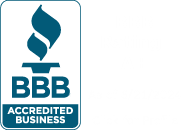Nonprofit organizations play a crucial role in serving communities and addressing societal needs. However, beyond the altruistic mission lies a crucial administrative task—complying with IRS regulations. For tax-exempt nonprofits, filing the appropriate IRS Form 990 is essential to maintain tax-exempt status and provide transparency regarding finances and operations.
The IRS Form 990 is the annual information return that tax-exempt organizations must file with the Internal Revenue Service. The form details the organization’s activities, governance, and finances. There are several versions of Form 990, each tailored to different types and sizes of nonprofits. Selecting the right form depends on the organization’s gross receipts, total assets, and certain activities.
Common Types of IRS Form 990
BryteBridge Consulting helps thousands of nonprofit organizations file IRS Form 990 and maintain compliance annually. Since it is an IRS form, filing Form 990 can be confusing. We are here to simplify your organization’s annual compliance needs. Let’s explore the primary versions of Form 990 and determine which one fits your nonprofit:
- Form 990-N: Also known as the e-Postcard, this form is for small tax-exempt organizations with gross receipts normally less than $50,000 per year. It requires minimal information and can be filed electronically.
- Form 990-EZ: This form is for organizations with gross receipts of less than $200,000 and total assets of less than $500,000 at the end of the tax year. While less comprehensive than the full Form 990, it requires more details than the 990-N.
- Form 990: The standard Form 990 is for larger organizations with gross receipts exceeding $200,000 or total assets at the end of the tax year greater than $500,000. It provides an in-depth view of the organization’s finances, governance, and activities.
- Form 990-PF: Private foundations must file Form 990-PF regardless of their income. This form details the foundation’s financial activities, distributions, and grants.
Determining Which Form 990 to Complete
Choosing the correct form is critical for compliance and transparency. Here are some steps to help determine which form your nonprofit should file:
- Assess financial data: Review your organization’s gross receipts and total assets for the tax year. Ensure accurate accounting records are maintained.
- Understand activities: Consider the nature of your nonprofit’s operations. Some activities might trigger specific reporting requirements.
- Check IRS guidelines: The IRS provides resources and guidelines to determine the appropriate form to file. Their website and publications can offer valuable insights.
- Seek professional advice: If uncertain, consult with the tax professionals at BryteBridge. We can provide tailored guidance based on your organization’s specific needs.
Filing the correct Form 990 ensures compliance with IRS regulations and maintains transparency with donors, stakeholders, and the public. Failure to file the appropriate form or filing incorrectly can result in penalties and jeopardize tax-exempt status.
Remember, staying informed about IRS requirements and diligently filing the right Form 990 demonstrates your commitment to accountability and strengthens the trust between your nonprofit and its supporters. By fulfilling these obligations, your organization can continue positively impacting the community while operating within legal boundaries.
If you have questions about what Form 990 your organization should file or want the BryteBridge team of tax professionals to assist, simply take our 990 evaluation quiz or contact us today. We’d love to support your organization in filing Form 990 and maintaining compliance.
Don’t want to worry about what type of Form 990 to file? Take advantage of our worry-free compliance and extensive nonprofit educational resources in our Connect membership. We’ll take care of your IRS Form 990 filing so you can focus on your nonprofit’s mission and programs.



